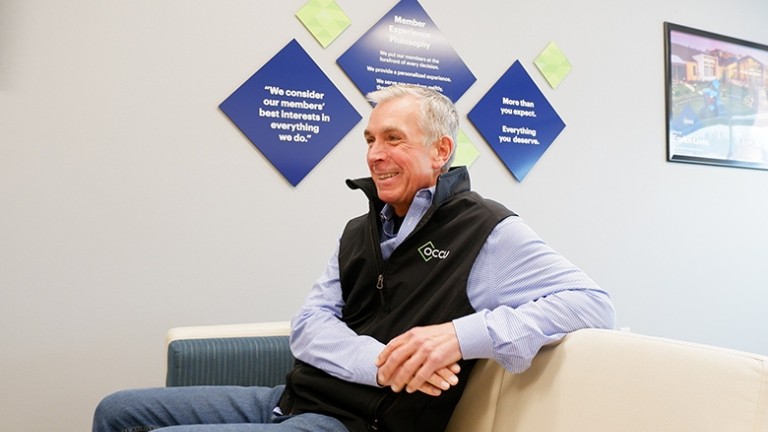Overdraft fees? No thanks. Here’s what you need to know
Running out of cash is the worst. One late paycheck or end-of-month crisis and before you know it, your account bottoms out.
It happens to a lot of people. If you’re one of them, you’re not alone and it's not hopeless.
Knowing how overdraft protection works can help you stay on top of your checking account — and stay out of the hole.
The biggest cause of overdraft fails
Overdraft fees often stem from a single epic mistake: assuming you know how much money you have.
When you check your balance online, you might think you’re getting a real-time picture of your available funds. But purchases don’t always go through right away. If you write a check, for example, the person might wait to cash it. Even when you use your debit card, the merchant might not send the info to your financial institution immediately. Sometimes they ask us to put a temporary hold on your money until the sale goes through.
So let’s say you have $50 in your account. You decide to splurge on a $20 lunch, and you whip out your debit card. The restaurant places a hold on your account, bringing your available balance to $30. But before the restaurant sends us the charge for posting, someone cashes a check you wrote last month for $40. Even though your actual balance is still $50, your available balance is only $30 — and the check overdraws you by $10.
Just because it looks like you have enough to cover your next purchase doesn’t mean you won’t overdraw. Your available balance may not always reflect all the money you’ve spent. In other words: The balance in your checking account may be smaller than it appears.
What happens when you overdraw?
Let’s say you’re down to your last $5, but you swipe your debit card to make a $10 purchase. One of two situations could occur:
- Your card gets declined and you lose some face. You walk away empty-handed but still have your $5.
- The sale goes through and you owe your credit union $5 because your checking account is now overdrawn.
Which will it be? That depends on whether you have overdraft protection. At OCCU, we offer three different overdraft protection options to help you scrape by when money gets tight.
- Set up a savings or money market account as backup. We’ll auto-transfer funds to cover any overdrafts on your checking account.
- Apply for a line of credit. We’ll pull from it when you overdraw. You’ll pay interest and make minimum payments on your balance.
- With extended overdraft coverage, we can authorize the purchase and pay your overdraft. Your next deposit will pay back what you owe, plus a $9 fee if the overdraft was for $5 or more.
A savings account is the cheapest form of overdraft protection. The line of credit costs more, but it’s still usually cheaper than overdraft fees. Since extended overdraft is the most expensive option, it only kicks in if all else fails.
So what is extended overdraft coverage?
For starters, it isn’t a loan. It’s not a line of credit, either. We simply let your account go negative until you’re able to pay it back. There’s a $9 fee for each overdraft that is $5 or more — up to five per day. The total amount you owe will come out of your next deposit, which you’ll need to make within 35 days.
All of our checking accounts come with extended overdraft coverage, but it’s totally optional. You can bail anytime. You can also decide what types of overdrafts you want us to authorize. It’s a bit like changing the settings on your social media account. When you open a checking account with us, your default extended overdraft settings look like this:
- Checks: ON
- Recurring payments: ON
- ATM transactions: OFF
- Everyday debit card purchases: OFF
If you’d rather have your debit card declined than pay a $9 overdraft fee, make sure you keep that setting turned off. You can even turn off extended overdraft coverage for checks and recurring payments, but keep in mind a bounced check could cost you even more in fees.
When money gets tight, overdrafts sometimes happen. But you can minimize the damage by using your overdraft protection options wisely.
*There is a $9 extended overdraft insufficient funds fee which applies to overdrafts created by check, in-person withdrawal, ATM withdrawal, Bill Pay, preauthorized automatic debits or transfers, ACH, Point of Sale, or other electronic means. Extended overdraft occurs when payment of a withdrawal (all in person or electronic) or other transaction(s) brings the account to a negative available balance. Extended overdraft fees will be automatically refunded if the member has had no insufficient funds activity over the past 12 calendar months. Extended overdraft fees will be refunded if the account is brought to a positive available balance before the end of the day processing on the day the insufficient funds activity occurs. Available balance excludes the amount of recent deposits subject to hold and holds for pending debit card or other transactions. Refer to account agreement for further details.


